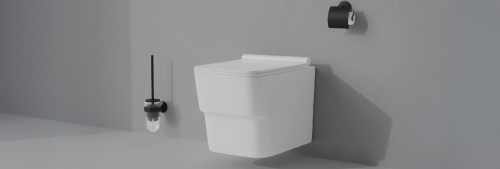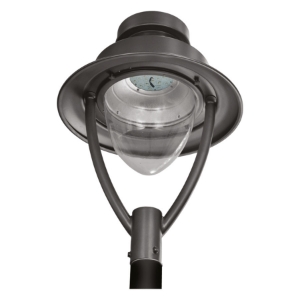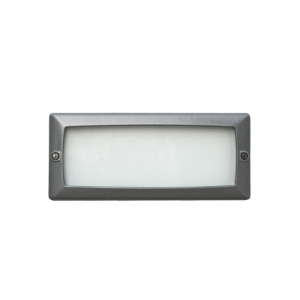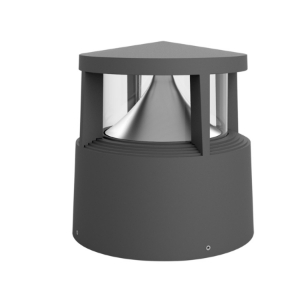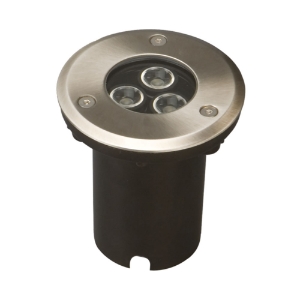In modern architecture and urban development, landscape lighting is no longer a decorative afterthought—it is a fundamental part of the built environment. For commercial projects like corporate campuses, hospitality chains, residential complexes, and educational institutions, thoughtfully designed outdoor lighting offers more than visibility. It brings cohesion, security, ambience, and enhanced property value.
In this guide, we explore the core lighting types used in large-scale landscape applications, optimal placement strategies, and the most viable energy options for long-term efficiency and reliability. This is not about garden accents for homes—this is about transforming urban and commercial landscapes into safe, functional, and beautifully lit experiences.
Why Landscape Lighting Matters for Commercial Projects
For large projects, lighting plays several key roles:
- Safety and navigation: Well-lit walkways, driveways, and entries reduce accidents.
- Security: Strategic illumination deters trespassing and protects property.
- Brand and ambience: Lighting contributes to a project’s architectural identity, creating mood and perception.
- Functionality: Makes outdoor spaces usable after dark—vital for hospitality, educational campuses, and public parks.
In a resort courtyard, for example, lighting sets the tone for relaxation and luxury. In an educational institution, it provides safe passage and clear orientation. In commercial campuses, it enhances visual hierarchy and brand stature.
Key Landscape Lighting Types for Large Projects
Understanding fixture types helps define the visual strategy and budget scope of any landscape lighting plan. Here are the most essential categories used in professional-grade projects:
1. Bollard Lights
Widely used in residential buildings and corporate parks, bollard lights are sturdy vertical fixtures that define pathways, medians, and entrances. Jaquar’s sleek aluminium bollards, fitted with long-life LEDs, are well-suited for weather-exposed public zones.
2. Flood Lights and Area Lights
Ideal for commercial landscape lighting, floodlights provide high-lumen output for parking lots, façades, and large open areas. They offer excellent coverage, often with adjustable angles and beam widths. These are essential in malls, industrial campuses, and sports facilities.
3. Ground Burial Lights
Ground burial lights, or in-ground uplighters, are flush-mounted into pavement or lawns to illuminate trees, pillars, signage, or sculptures. In institutional campuses or resorts, they offer architectural emphasis without visual obstruction.
4. Wall and Facade Lights
Wall-mounted lights add definition and depth to vertical surfaces. These are frequently used in hospitality projects to highlight textures, balconies, or entrances while maintaining a clean, linear design language.
5. Guardrail and Step Lights
Where safety meets aesthetics, guardrail lights and recessed step lights play a key role. From amphitheatres to hotel entrances, these low-glare, integrated solutions improve nighttime usability without drawing attention to the fixture itself.
6. Underwater Lights
Used in fountains, swimming pools, and water bodies, underwater lights create dramatic ambient effects. Jaquar’s stainless steel IP-rated options are corrosion-resistant and ideal for both freshwater and chlorinated installations.
7. Pole Lights and High-Mast Systems
For car parks, boulevards, and large courtyards, pole-mounted area lighting ensures high visibility. These fixtures, often customised for height and spread, are vital for institutional and residential township layouts.
Strategic Placement in Large-Scale Projects
The success of a landscape lighting design in commercial settings depends heavily on purposeful placement. A lighting plan should be rooted in function, safety, and brand storytelling.
1. Pathways and Walkways
From university campuses to urban housing societies, pedestrian movement is guided safely by illuminated walkways. Symmetrical placement of bollards or embedded step lights helps avoid shadows and improves visual rhythm.
2. Facade and Entrance Lighting
Entrances should be well-lit, creating an inviting or authoritative first impression. Uplights or flood lights can be used to accentuate architectural features, signage, or material textures on hotel, museum, or retail façades.
3. Green Spaces and Courtyards
Courtyards and lawns within commercial or institutional premises often serve as social zones. Subtle washes, spike lights for plantings, and ambient pole lights can elevate usability while preserving serenity.
4. Perimeters and Boundaries
Lighting perimeters not only enhances security but also defines the site layout. Wall light fixtures, or tall poles with controlled beam spreads, are essential in gated communities, tech parks, and resorts.
5. Functional Spaces
In hotels and hospitals, external staircases, ramps, drop-off zones, and parking areas must be fully lit. Task-focused luminaires with anti-glare optics ensure comfort and code compliance.
Energy Options for Sustainable Lighting
Sustainability, maintenance, and operating costs are crucial factors in large projects. The following are the most reliable power sources used in commercial-scale lighting installations.
1. LED Landscape Lighting
LED landscape lighting has become the default for modern projects thanks to its long lifespan, low power draw, and minimal heat emission. Jaquar's outdoor LED range is engineered with high-lumen output and excellent thermal management—suited for high-usage applications.
Benefits include:
- Over 50,000 hours of operation
- Lower operational cost and carbon footprint
- Design flexibility in beam angles and colour temperatures
2. Solar Landscape Lighting
For off-grid areas, solar landscape lighting offers a sustainable, maintenance-light alternative. Though not yet ideal for high-brightness or always-on applications, solar options are perfect for boundary lighting, parks, or low-traffic walkways.
Points to note:
- Requires consistent daily sunlight for full charge
- May include motion sensors or timers to preserve battery
3. Hybrid and Smart Systems
In high-end hospitality and commercial complexes, hybrid systems integrate solar, grid, and smart control modules. These allow automated scheduling, dimming, and even occupancy detection—great for energy savings in low-use zones.
Although Jaquar primarily focuses on energy-efficient fixed-output lighting for outdoor use, its luminaires are compatible with advanced control systems that integrate well with commercial BMS (Building Management Systems).
Best Practices in Landscape Lighting Installation
Professional landscape lighting installation is critical for project longevity and performance. Here are some key practices to follow:
- Use IP-rated fixtures: For durability against rain, dust, and vandalism.
- Plan for wiring access: Ensure trenches or conduits are included in civil works planning.
- Avoid glare: Shielded optics or frosted covers reduce discomfort, especially in public-use areas.
- Schedule maintenance: Annual cleaning and inspection help prevent downtime or electrical failure.
- Factor in vegetation growth: Plantings may obstruct lights over time—allow clearance during installation.
Landscape Lighting Ideas for Key Project Types
Here are lighting strategies tailored to the needs of different commercial project categories:
Residential Townships
- Bollards along walkways and jogging tracks
- Pole lights at entrances and communal lawns
- Underwater lighting in pools and water bodies
Hospitality & Resorts
- Warm-toned step lights in pathways and verandas
- Ground lights to uplight palm trees and sculptures
- Wall washers to create mood along outdoor dining zones
Educational Institutions
- Pole lights and wall lights for wide visibility
- Embedded stair lights for safety
- Motion-sensor lighting in less trafficked areas
Corporate Campuses
- Architectural lighting on brand signage
- Floodlights for parking and drop-off zones
- Zone lighting with dusk-to-dawn sensors for energy saving
Conclusion
Commercial-scale landscape lighting is both a technical and artistic exercise. It blends urban design, electrical engineering, and aesthetic sensibilities to shape how we experience built environments after dark. Done well, it creates a secure, functional, and beautiful landscape that aligns with the purpose and values of the space—be it a school, a resort, or a township.
Jaquar’s outdoor lighting collection is designed with the robustness and elegance required for large-scale projects. With weatherproof builds, premium finishes, and energy-efficient LEDs, Jaquar luminaires offer the assurance of performance with an understated sophistication that suits commercial architecture.
FAQs
Q.1 What’s the ideal IP rating for outdoor commercial lighting?- Look for IP65 or higher for complete protection against dust and low-pressure water jets.
Q.2 How long do LED commercial outdoor lights last?
- Typically 50,000+ hours, depending on product quality and usage.
Q.3 Can Jaquar lights be used in solar hybrid systems?
- Yes, Jaquar’s outdoor luminaires are compatible with smart and hybrid energy control systems.
Q.4 What are the maintenance requirements for outdoor lights?
- Routine annual cleaning, inspection of wiring, and timely replacement of worn components.
Q.5 What’s the difference between floodlights and area lights?
- Floodlights have a wide beam for targeted areas, while area lights evenly illuminate large open spaces.

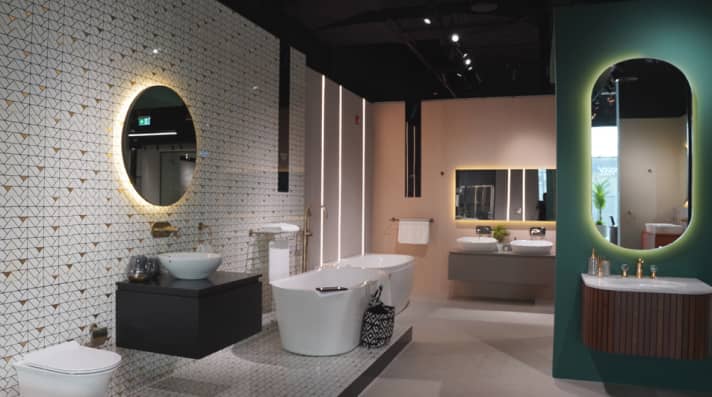
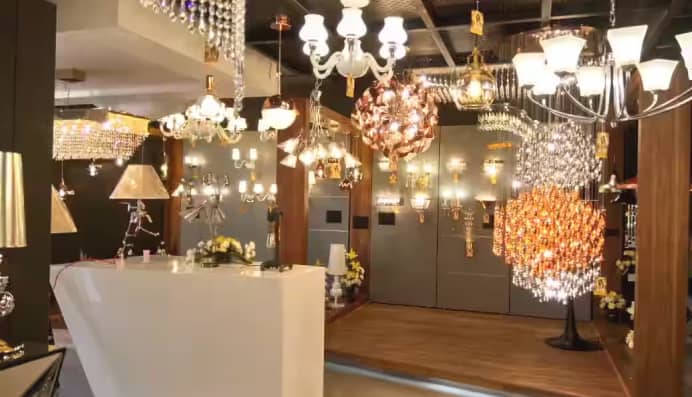
.jpeg)
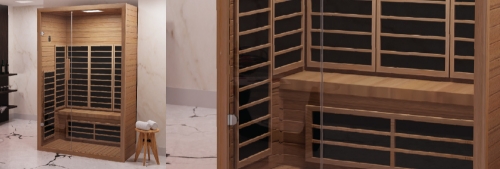
_500.jpeg)


